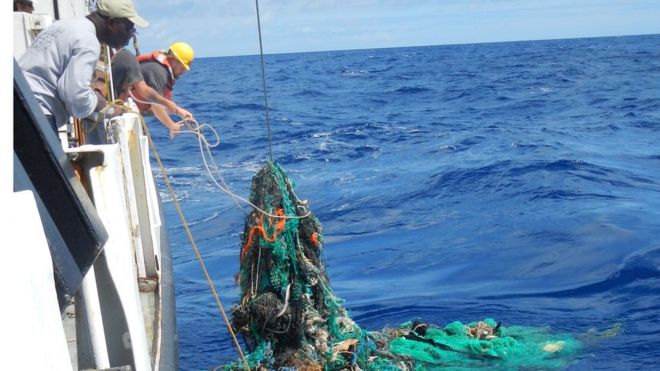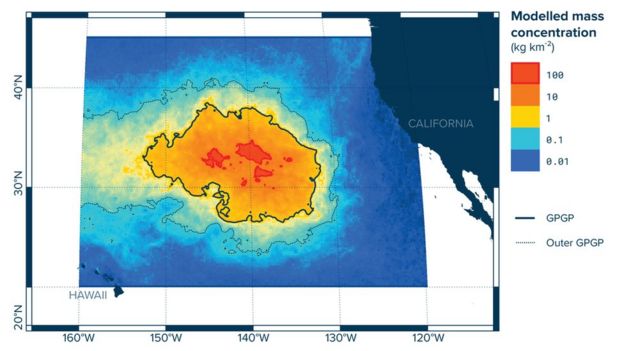Plastic patch in Pacific Ocean growing rapidly, study shows

A collection of plastic afloat in the Pacific Ocean is growing rapidly, according to a new scientific estimate.
Predictions
suggest a build-up of about 80,000 tonnes of plastic in the "Great
Pacific Garbage Patch" between California and Hawaii.This figure is up to sixteen times higher than previously reported, say international researchers.
One trawl in the centre of the patch had the highest concentration of plastic ever recorded.
"Plastic concentration is increasing - I think the situation is getting worse," said Laurent Lebreton of The Ocean Cleanup Foundation in Delft, Netherlands, which led the study.
"This really highlights the urgency to take action in stopping the in-flow of plastic into the ocean and also taking measures to clean up the existing mess."
Waste accumulates in five ocean areas, the largest being the patch located between Hawaii and California.

Microplastics accounted for 8% of the total mass of plastic afloat within an area of 1.6 million square km.
Of the estimated 1.8 trillions bits of plastic, some were larger than microplastics, including fishing nets, toys, and even a toilet seat.
Erik van Sebille of Utrecht University in the Netherlands, who is not connected with the study, said the amount of plastic discovered was "staggering".
"While their estimates come with large uncertainty ranges, they do report a staggering amount of plastic," he said.
"And they also discovered that the Garbage Patch is moving around much more than anyone expected."

However, the differences could also be down to increasing levels of plastic pollution in the time since the previous studies were carried out.
Plastic washed out to sea following the 2011 Japan earthquake and tsunami could account for as much as 20% of plastic accumulating in recent years, the research, published in Scientific Reports, suggests.
What the study found
- Plastics made up 99.9% of all debris in this part of the ocean
- At least 46% of plastic consisted of fishing nets, and over three quarters of the plastic was debris larger than 5cm, including hard plastics, plastic sheets and film
- Although most large items had broken down into fragments, the researchers were able to identify a small number of objects, including containers, bottles, lids, packaging straps, ropes, and fishing nets
- Fifty items in the sample had a readable production date: one from 1977, seven from the 1980s, 17 from the 1990s, 24 from the 2000s and one from 2010
- Only certain types of debris that were thick enough to float stayed and accumulated in this zone, such as the common plastics polyethylene and polypropylene, which are used in packaging.
The message of the study is clear, said Laurent Lebreton.
"It goes back to how we use plastic," he said.
"We're not going to get away from plastic - in my opinion it's very useful, in medicine, transportation and construction, but I think we must divert the way we use plastic, particularly in terms of single-use plastic and those objects that have a very short service lifespan."

No comments: